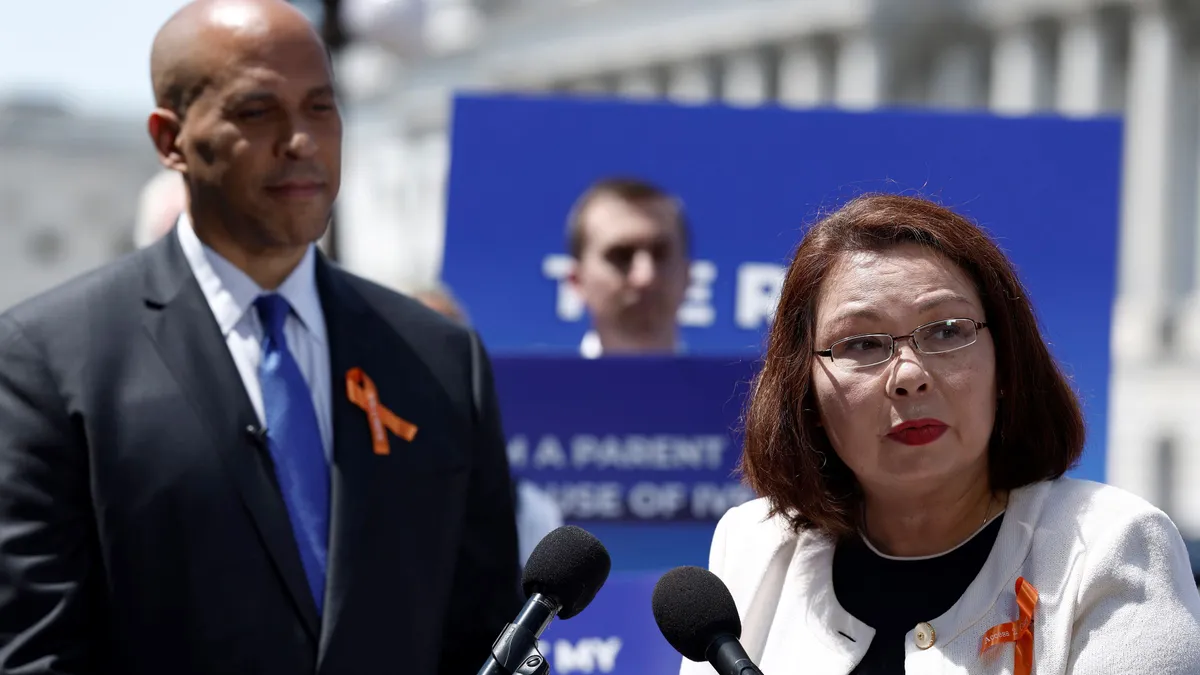In one of the many executive orders that have characterized his current term, President Donald Trump on Feb. 18 announced the administration’s intent to increase access to in vitro fertilization.
The president pledged to “eas[e] unnecessary statutory or regulatory burdens to make IVF treatment drastically more affordable.” As part of the order, Trump called on the assistant to the president for domestic policy to submit a list of policy recommendations within 90 days “on protecting IVF access and aggressively reducing out-of-pocket and health plan costs for IVF treatment.”
As that deadline approaches, it’s unclear what form those policies will take and who will be included in the push for better access.
“The Order recognizes the importance of family formation and that our Nation’s public policy must make it easier for loving and longing mothers and fathers to have children,” a fact sheet on the executive order states.
The administration estimates that costs for IVF can range from $12,000 to $25,000 per cycle and notes that multiple cycles can be necessary to get pregnant. Only about a quarter of employers say they cover the treatment for their workers, per the fact sheet.
However, Trump eliminated the Centers for Disease Control and Prevention’s Assisted Reproductive Technology Surveillance team, which tracked IVF effectiveness, in April as part of the federal government’s widespread layoffs.
Among large employers, coverage might be higher, according to Mercer’s 2024 National Survey of Employer-Sponsored Health Plans, which was published in November 2024. The report found that 47% of large employers (those with 500 or more workers) covered IVF, up from 45% the previous year. Among the largest employers (those with 20,000 or more workers), 70% provide coverage for IVF, an increase from 62% the year before.
Of the large employers that provide fertility benefits, 64% intend for them to be inclusive, meaning eligibility isn’t tied to someone with the clinical definition of infertility, Mercer said. A separate report by Mercer, published in April 2024, found that 41% of workers said fertility benefits, such as IVF, egg or sperm freezing or surrogacy, would be helpful.
“It’s clear that supporting families holistically ultimately contributes to a healthier and more engaged workforce. While these employer-sponsored benefits have only started gaining widespread traction in the last 5-10 years, provision of comprehensive fertility benefits, parental leave, and return to work support can make a meaningful difference to employees,” Lindsay Bower, senior principal in Mercer’s health and benefits team, said in an April 30 statement to HR Dive.
In some cases, employers are taking fertility treatment access into their own hands when insurance coverage isn’t an option.
For example, at Grindr, the company behind an LGBTQ+ dating app, a plurality of workers are gay men, many of whom get left out of conversations about fertility benefits, CEO George Arison previously told HR Dive. The company recently started offering up to $300,000 over five years to workers to cover adoption, surrogacy and fertility treatments.















